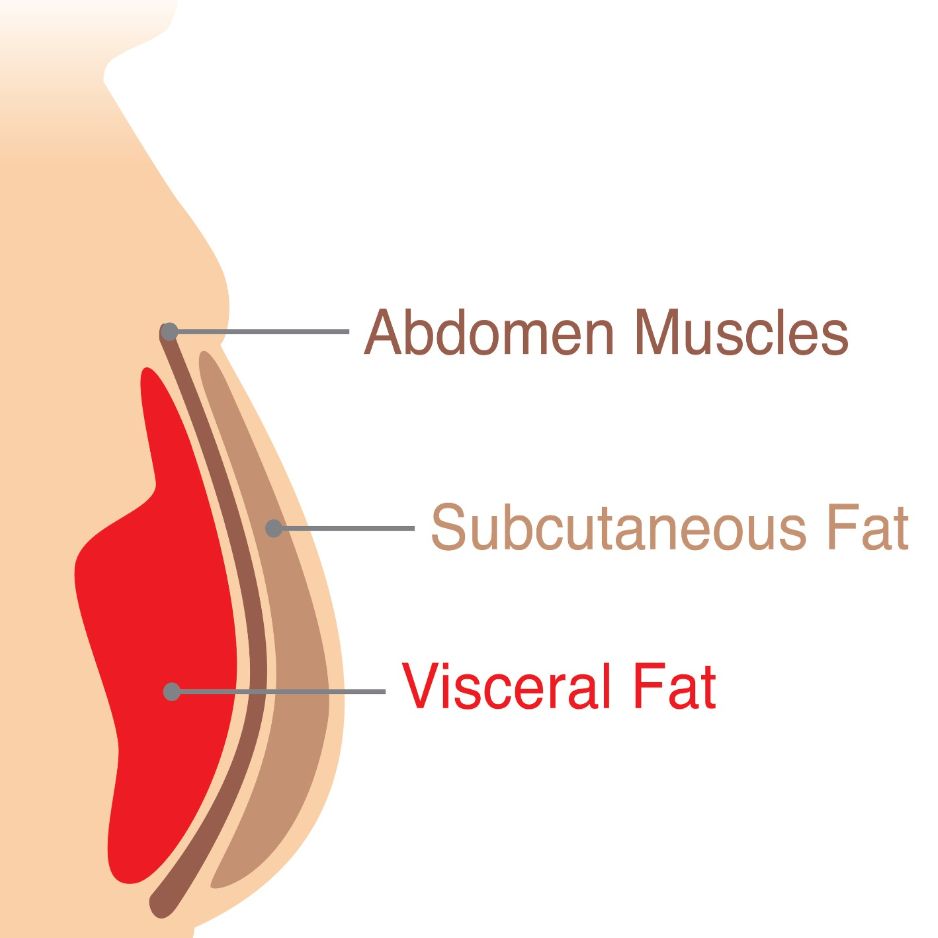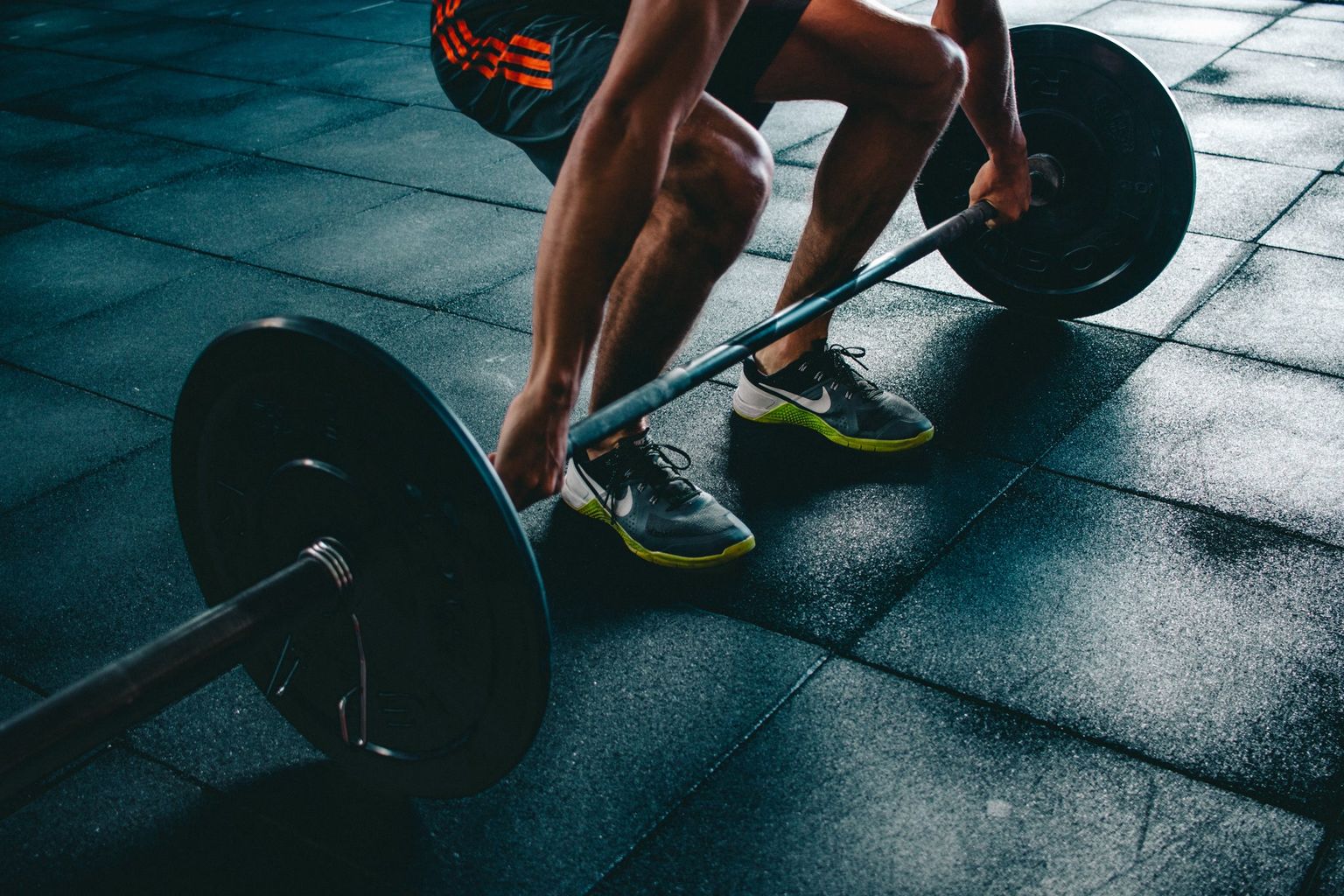Bicep Growth Blueprint: A Science-Backed Approach

Bicep Growth Blueprint: Science-Backed Guide to Bigger Arms
Table of Contents
- Common Roadblocks to Bicep Growth
- Biceps Anatomy 101
- Evidence-Based Bicep Exercise Tiers
- Programming Fundamentals
- Progressive 8-Week Bicep Program
- Time-Saver Session (30 Minutes)
- Troubleshooting Plateaus & Elbow Pain
- Nutrition Tips for Optimal Bicep Growth
- How to Track Progress—Beyond the Mirror
- Frequently Asked Questions
- Next Steps
- References
Common Roadblocks to Bicep Growth
If you’ve been curling for months and your sleeves still feel roomy, you’re not alone. Most lifters stall for the same three reasons:
- Insufficient training volume – The average gym-goer tops out at 4–6 weekly sets per bicep. Meta-analysis shows hypertrophy rises once you hit at least 10 high-quality sets per week (Schoenfeld 2016). Beginners can start at that floor and add sets over time.
- Poor exercise variety – Hammer curls, chin-ups, and incline curls hit different elbow angles and muscle fibers, driving balanced growth.
- Lack of objective feedback – Tape-measure changes are slow, and strength jumps can mask sloppy form. A baseline DEXA scan pinpoints lean mass in each arm so you can see whether you’re adding contractile tissue, not just water weight.
📊 Pro Tip: Book a BodySpec DEXA scan before you start the 8-week program so you can compare arm-lean-mass changes at week 9.
Biceps Anatomy 101
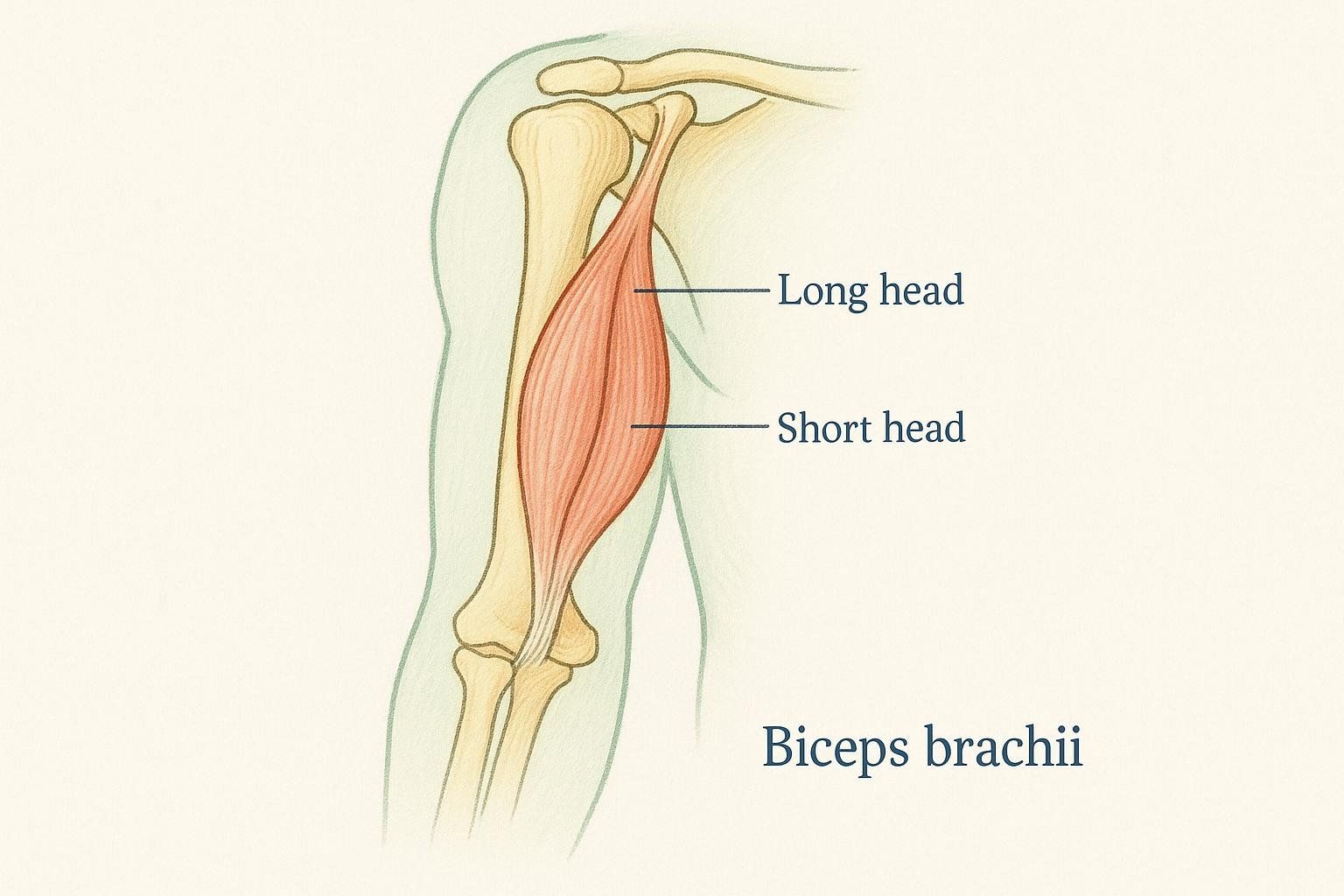
Your biceps brachii has two distinct heads that flex the elbow, supinate the forearm, and assist shoulder flexion:
| Head | Origin | Unique Role |
|---|---|---|
| Long head | Supraglenoid tubercle of the scapula | Adds width to the outer arm and stabilizes the shoulder |
| Short head | Coracoid process of the scapula | Creates the coveted “bicep peak” when hypertrophied |
Supporting muscles that influence arm size include the brachialis (under the biceps, pushing it up) and brachioradialis (upper forearm). A well-rounded plan biases all three.
Evidence-Based Bicep Exercise Tiers
Instead of relying on gym folklore, the following tiers synthesize electromyography (EMG) findings from multiple peer-reviewed studies:
- ACE study (2014) – overhead concentration curl topped the activation list (ACE 2014).
- Oliveira et al. (2013) – incline curls favored long-head activation, while preacher curls emphasized the short head (Oliveira 2013).
- Sanchez-Medina et al. (2018) – documented 70–90 % activation across common dumbbell and EZ-bar variations (Sanchez-Medina 2018).
| Tier | Exercises | Why They’re Great |
|---|---|---|
| Tier 1 — Highest Activation | Concentration curl • Incline dumbbell curl • EZ-bar preacher curl | ≥ 90 % EMG activation in at least one study |
| Tier 2 — High Activation | Supinated chin-up* • Bayesian cable curl • Hammer curl • Spider curl | 75–90 % activation; strong brachialis & short-head recruitment |
| Tier 3 — Moderate / Variety | Reverse EZ-curl • Zottman curl • Drag curl • Resistance-band curl | 50–75 % activation—great for variety, forearm focus, and joint relief |
The ACE (2014) study recorded roughly 80 % peak activation for chin-ups, placing them in Tier 2 rather than Tier 1.
How to use the tiers:
- Beginners: Pick one Tier 1 exercise and stick with it for 4 weeks to master technique. Add a Tier 2 move once soreness subsides.
- Intermediates: Include one Tier 1 and one Tier 2 exercise each training day.
- Rotate Tier 3 movements every 4–6 weeks for novelty and connective-tissue relief.
💡 Form Check: Film a set in slow motion. Compare elbow position and wrist angle to catch swing cheating.
Programming Fundamentals
Weekly Volume Landmarks
Do at least 10 hard sets per week for the biceps; most people top out around 18–20 productive sets before recovery falters. Adjust based on soreness, pump, and progress.
Training Frequency
A 2016 meta-analysis found training a muscle twice per week outperformed once-weekly sessions when volume was matched (Schoenfeld 2016b). Split your biceps work across two days (e.g., Pull Day + Arms Day) so joints recover while the muscle sees consistent stimulation.
Rep & Load Zones
- 6–12 reps at 65–80 % 1RM is the classic hypertrophy sweet spot.
- Sprinkle in 12–15-rep “pump” sets for added metabolic stress.
- Leave 1–2 reps in reserve (RIR) on most sets; beginners can stay 2–3 RIR until technique feels rock-solid.
Attentional Focus: Mind–Muscle Connection
A 2017 trial by Schoenfeld and colleagues found that using an internal focus (consciously squeezing the biceps) during curls produced significantly more muscle growth than an external focus when training volume was identical (Schoenfeld 2017).

How to apply it:
- Visualize your biceps shortening like a spring as you lift.
- Pause for a one-second squeeze at the top.
- Reduce the load if you lose the “feel” in the target muscle.
Progressive Overload Checklist
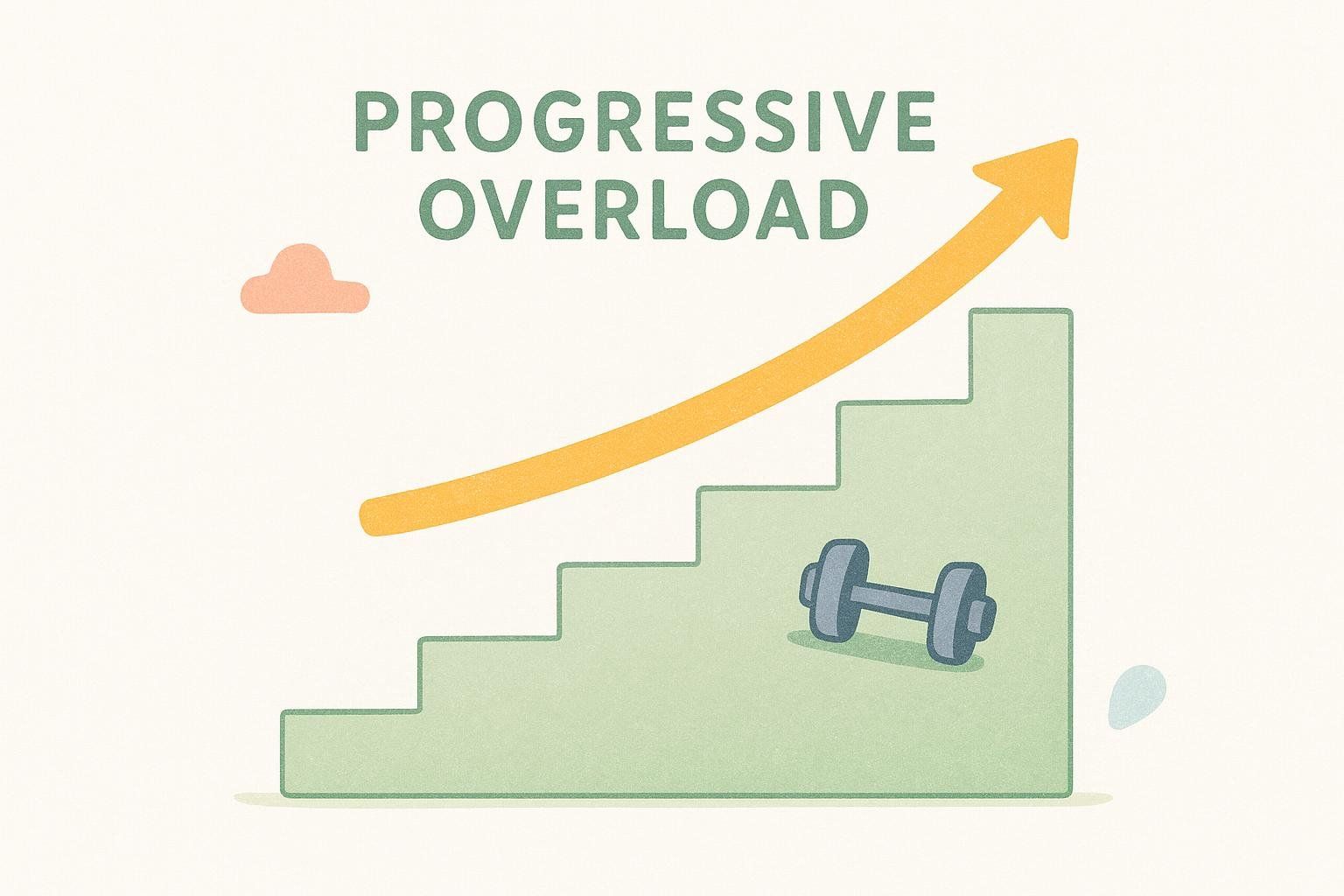
- Add reps until you exceed the target range, then increase weight 2–5 lb.
- Shorten rest gradually from 90 sec to 60 sec.
- Tempo overload: 3-second eccentrics amplify mechanical tension without extra weight.
Progressive 8-Week Bicep Program
Key Terms
- AMRAP: As many reps as possible, stopping 1 rep short of form failure.
- Bayesian cable curl: Standing single-arm cable curl with the arm slightly behind the torso to maximize long-head stretch.
- Spider curl: Chest-down curl on an incline bench; eliminates momentum and targets the short head.
| Week | Day 1 (Pull) – Exercises & Sets | Day 2 (Arms) – Exercises & Sets | Weekly Sets |
|---|---|---|---|
| 1 | Incline DB Curl 3×10 Supinated Chin-Up 3×AMRAP | EZ-Bar Preacher 3×10 Hammer Curl 3×12 | 12 |
| 2 | Incline DB Curl 4×10 Supinated Chin-Up 4×AMRAP | EZ-Bar Preacher 3×10 Hammer Curl 3×12 | 14 |
| 3 | Incline DB Curl 4×10 (+2–5 lb) Supinated Chin-Up 4×AMRAP (weighted) | EZ-Bar Preacher 3×10 (3-sec eccentric) Hammer Curl 3×12 (3-sec eccentric) | 14 |
| 4 | Incline DB Curl 3×10 Supinated Chin-Up 3×AMRAP | EZ-Bar Preacher 2×10 Hammer Curl 2×12 | 10 |
| 5 | Spider Curl 4×8 Supinated Chin-Up 4×AMRAP | Bayesian Cable Curl 4×12 Hammer Curl 4×12 | 16 |
| 6 | Spider Curl 4×8 Supinated Chin-Up 4×AMRAP | Bayesian Cable Curl 5×12 Hammer Curl 5×12 | 18 |
| 7 | Spider Curl 4×8 (heavier) Supinated Chin-Up 4×AMRAP (heavier) | Bayesian Cable Curl 5×12 + drop set Hammer Curl 5×12 + drop set | 18 |
| 8 | EZ-Bar Curl 1RM Test Light Cable Curl 2×15 | Pump Circuit: Cable Curl 3×15 Band Curl 2×20 | 6 |
Beginner tweak: If 12 weekly sets feel overwhelming, cut each exercise to 2 sets in Weeks 1–2, then build up.
Time-Saver Session (30 Minutes)
Perfect for busy professionals who squeeze training into a lunch break.
| Circuit | Exercise | Reps | Rest |
|---|---|---|---|
| A1 | Cable Rope Hammer Curl | 12 | Superset |
| A2 | Incline DB Curl | 10 | 60 sec |
| B1 | Reverse EZ-Curl | 12 | Superset |
| B2 | Resistance-Band Curl | 15 | 60 sec |

Complete three rounds of each superset. You’ll log 12 total sets in under half an hour.
Troubleshooting Plateaus & Elbow Pain
| Problem | Likely Cause | Practical Fix |
|---|---|---|
| No size increase after 4 weeks | Volume too low | Add four weekly sets or use a myo-rep finisher: perform one set to 1–2 RIR, rest 15–20 sec, then complete mini-sets of 3–5 reps—each to 1–2 RIR—until you fail to complete 3 reps with good form (typically 3–5 mini-sets). |
| Forearm or elbow ache | Excess wrist supination + heavy preacher curls | Switch to neutral-grip hammer and reverse curls for two weeks |
| Fatigue stalls performance | Poor recovery habits | Prioritize 7–9 hours of sleep, boost calories around training, and add an extra rest day or deload week |
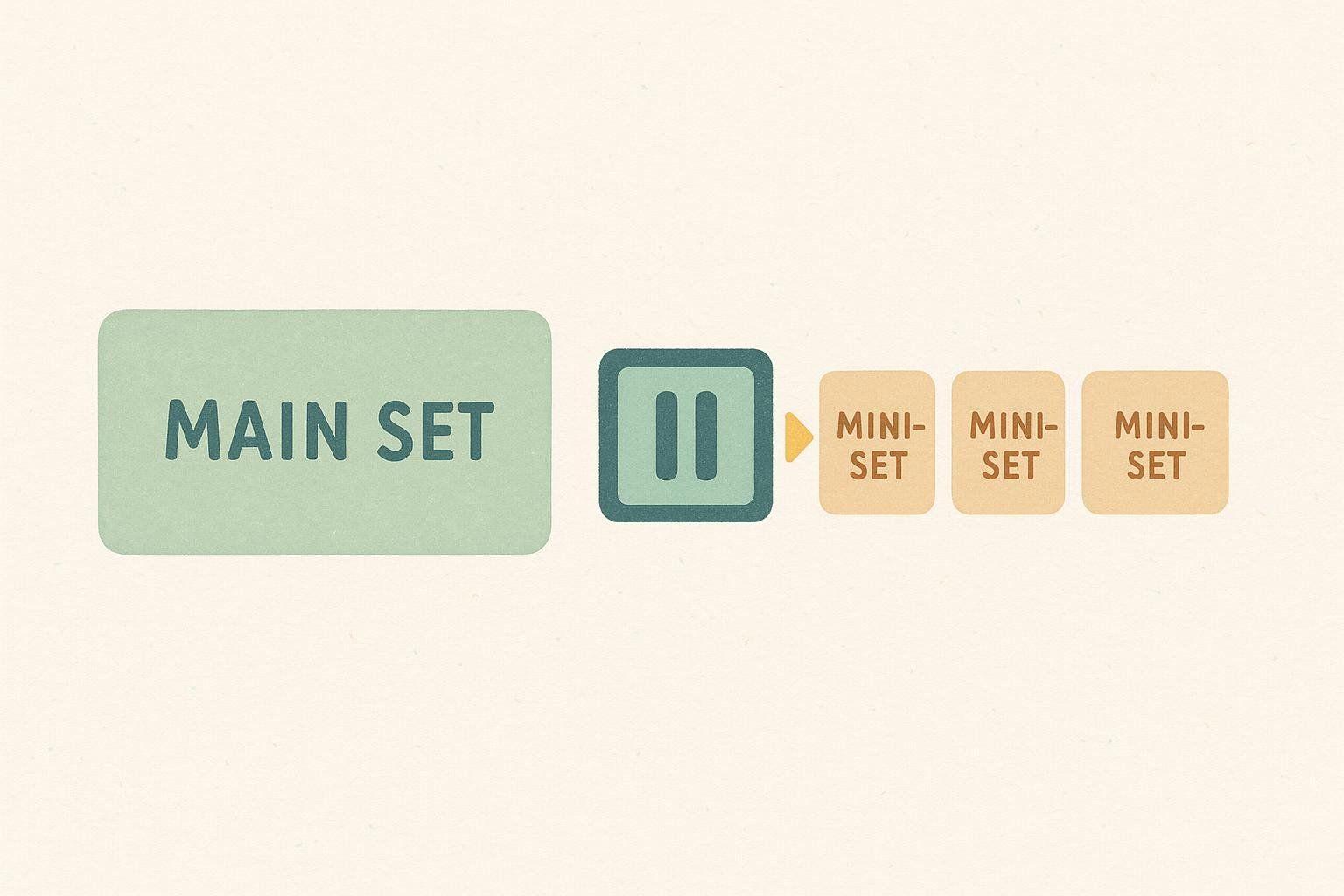
Nutrition Tips for Optimal Bicep Growth
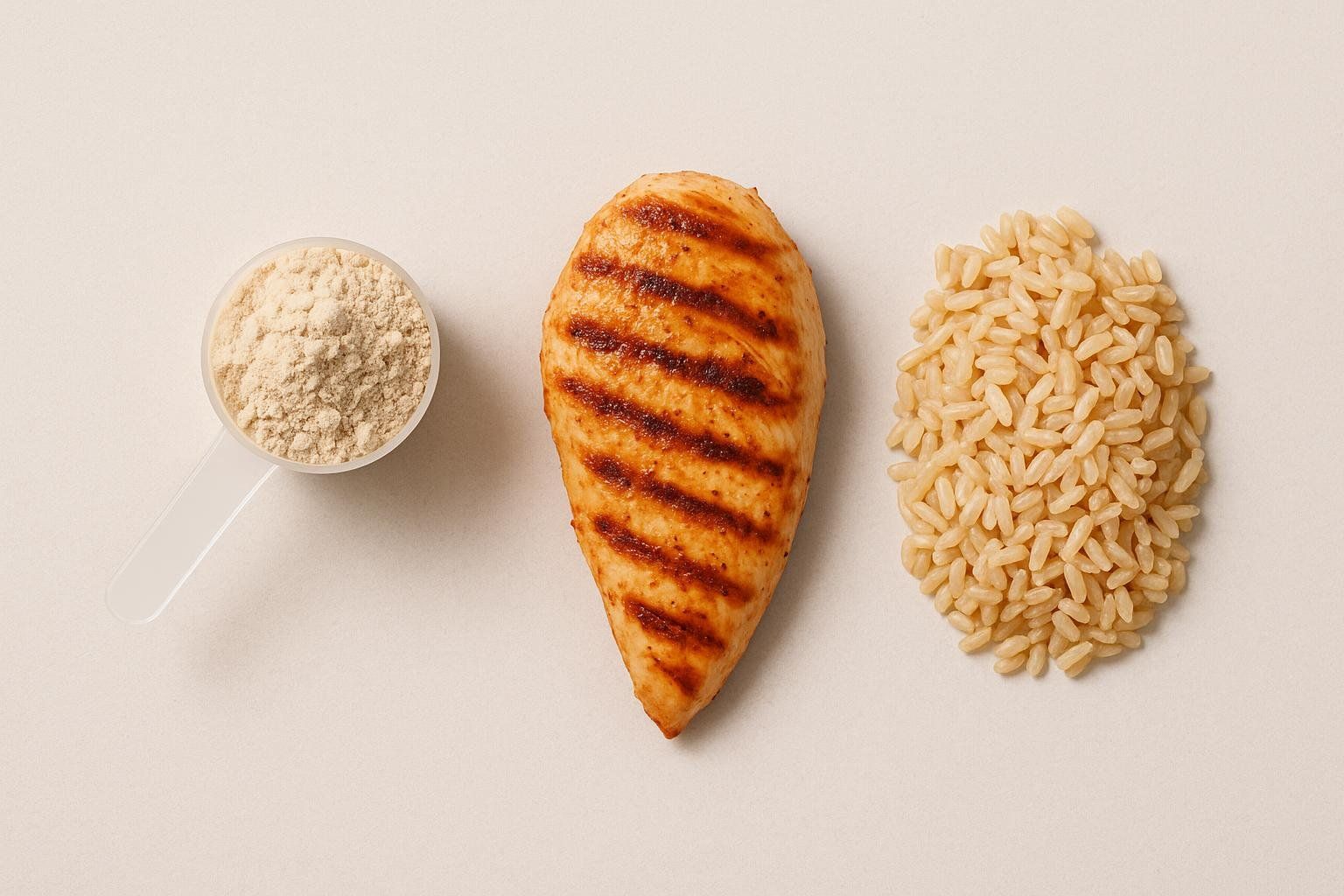
- Protein: 1.6–2.2 g/kg body weight daily—spread across 3–5 meals.
- Carbs: 3–5 g/kg support high-volume curls.
- Around-Workout Nutrition: Consuming ~20 g whey plus ~25 g fast-digesting carbs before or after workouts supports muscle protein synthesis; timing appears flexible (Kerksick 2017).
- Creatine Monohydrate: 3–5 g/day boosts elbow-flexor strength. See Top Creatine Supplements for Muscle Growth in 2025.
- Nutrient Timing: Dig deeper in our nutrient-timing guide.
How to Track Progress—Beyond the Mirror
| Metric | Frequency | Tool |
|---|---|---|
| Arm circumference at mid-bicep | Weekly | Cloth tape (same time of day) |
| EZ-Bar Curl 1RM | Week 1 & 8 | Strength test |
| Lean mass per arm | Start & Week 9 | DEXA scan (DEXA muscle measurement guide) |
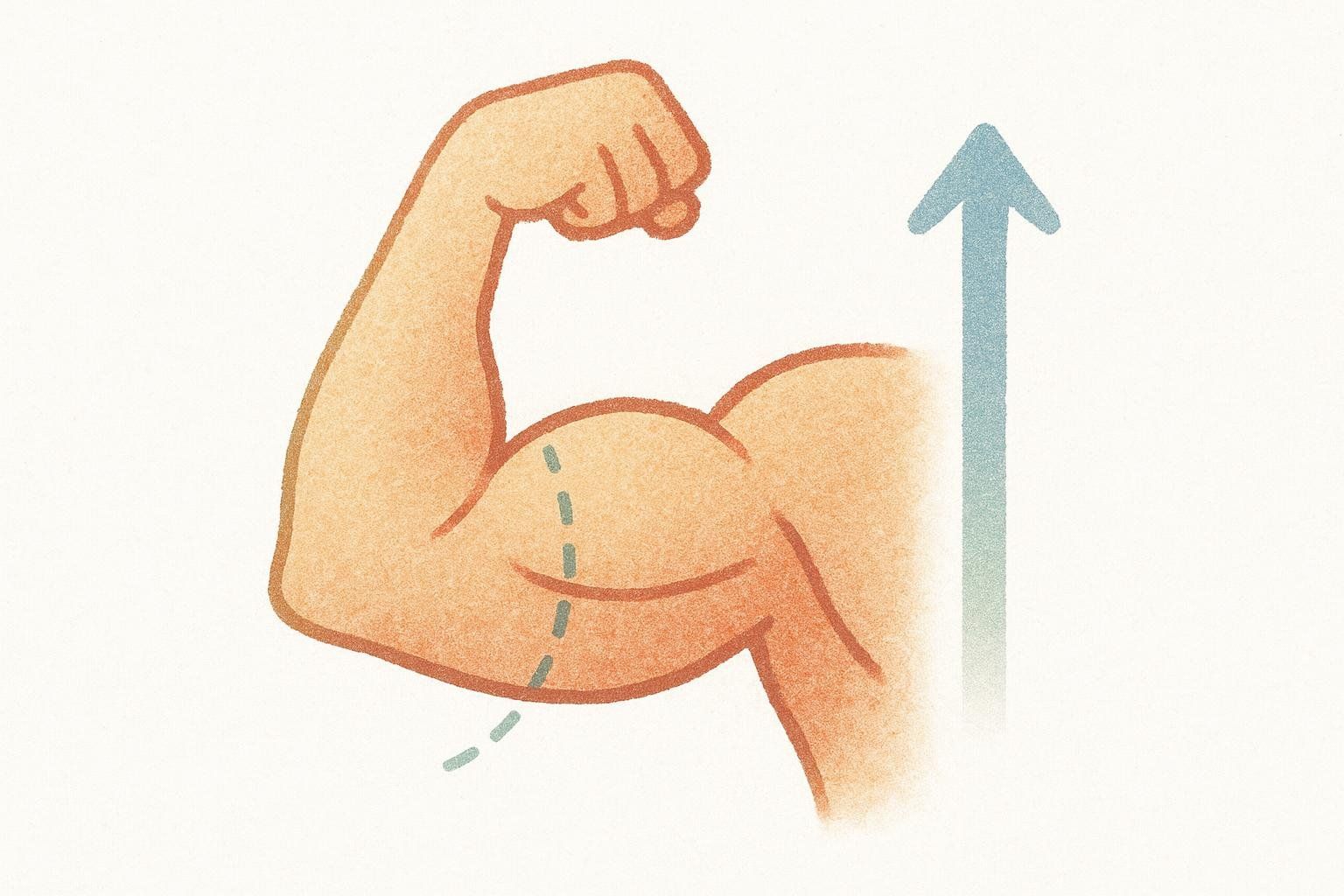
Even a 0.5-lb lean-mass gain per arm shows on a DEXA printout—motivation you can’t fake with good lighting.
Frequently Asked Questions
How many sets per week for optimal bicep growth?
Start with 10 hard sets and work up to 18–20 as long as recovery stays on track.
What rep range is best?
6–12 reps covers most hypertrophy. Include occasional 12–15-rep pump work for added metabolic stress.
Can I train biceps every day?
Daily bicep sessions aren’t recommended for most lifters. High-frequency plans are generally reserved for advanced athletes who can break volume into very small sessions (≤4–5 sets), monitor joint health closely, and prioritize recovery. For beginners and intermediates, stick to 2–3 bicep-focused days per week to avoid overuse injuries and ensure quality effort each session.
Next Steps
- Map out the 8-week program in your calendar.
- Book a baseline DEXA scan to quantify starting lean mass—our DEXA Scan Near Me resource lists convenient locations.
- Re-scan at week 9 and see exactly how much muscle you added.
- Share your results: Tag @BodySpec on social media with your before-and-after scan charts for a chance to be featured in our community success stories.
Schedule your BodySpec scan today and build measurable muscle with confidence.
References
- Schoenfeld BJ, Ogborn D, Krieger JW. (2016). Dose-response relationship between weekly resistance training volume and increases in muscle mass: A systematic review and meta-analysis. Sports Medicine, 46(12), 2045–2063. https://pubmed.ncbi.nlm.nih.gov/27433992/
- Schoenfeld BJ, Grgic J, Krieger JW. (2016). Effects of resistance training frequency on measures of muscle hypertrophy: A systematic review and meta-analysis. Sports Medicine, 46(11), 1689–1697. https://pubmed.ncbi.nlm.nih.gov/27102172/
- Schoenfeld BJ, Vigotsky AD, et al. (2017). The effects of attentional focus strategies on muscle growth and strength. European Journal of Sport Science, 17(8), 1–9. https://www.ncbi.nlm.nih.gov/pmc/articles/PMC5867436/
- American Council on Exercise. (2014). ACE-sponsored research: Best biceps exercises. https://www.acefitness.org/continuing-education/prosource/august-2014/4933/ace-study-reveals-best-biceps-exercises/
- Oliveira LF, Matta TT, Alves DS, Garcia MA, Vieira TM. (2013). Effect of shoulder position on biceps brachii EMG in different dumbbell curls. Journal of Sports Science & Medicine, 12(1), 164–170. https://pubmed.ncbi.nlm.nih.gov/24421727/
- Sanchez-Medina L, Pérez CE, et al. (2018). Differences in electromyographic activity of biceps brachii and brachioradialis between dumbbell and barbell curls. Journal of Strength & Conditioning Research, 32(8), 2238–2245. https://pubmed.ncbi.nlm.nih.gov/29955337/
- Kerksick CM, Arent S, Schoenfeld BJ, et al. (2017). International Society of Sports Nutrition position stand: Nutrient timing. Journal of the International Society of Sports Nutrition, 14(1), 33. https://jissn.biomedcentral.com/articles/10.1186/s12970-017-0189-4
